Bachelor of Paramedic Science
The Bachelor of Paramedic Science is the paramedical qualification you need if you want to work as a registered Paramedic in Australia.
The degree can be financed by your own money, or by opting into the Higher Education Contribution Scheme (HECS), which is a loan from the government and you pay it back through the Australian Tax Office when you earn over $40,000 a year.
There are many universities offering the Bachelor of Paramedic Science and it depends on a lot of factors as to which uni you choose.
If you see yourself working as an Ambulance Paramedic, you’ll need the degree; or if you want to work as an Emergency Medical Technician/Ambulance Technician in the private sector, uni is not required.
If you’re thinking about going to uni, just be aware that there are differences in what you’ll study. Some universities will focus in indigenous health, some on leadership, mentoring and management; whereas others may specialise in obstetrics and pediatrics.
What you will learn, depends on the university’s view of the industry and which topics will add the most value in terms of career development and the future needs of the industry.
It’s important to be aware of the trends in society as we deal with more an more mental health and overall public health concerns.
Take the Coronavirus pandemic for instance. This unexpected, global issue has raised many important questions about the future of the health care workforce. Apart from anything else, there has been a renewed interest in working in health care because it is one of the most respected jobs and there’s so many different careers you can do once you’re in.
Before Paramedic registration was introduced in late 2018, you could become a Paramedic (and call yourself a Paramedic) via internships and traineeships (NSW Ambulance for instance).
How to get the degree
Go to university full-time for 3 years, apply to your state ambulance service, then complete 1 year as a probationary Paramedic
- This is the perfect option if you have just left school, got the appropriate ATAR/OP score and can commit 100% to full-time study.
- After graduation, you can apply to your State Ambulance Service and work in a post-graduate role.
What if you don’t meet the university entry standard?
If you are one of the many people who didn’t end up with good school results, or you are a mature-aged student whose life got in the way of study…not all is lost, there’s some good news.
At Paramedicine Online we’ve done a lot of research on the paramedical industry and partnered with the largest pre-hospital emergency health care college to give you the best opportunity to reach your goal of becoming a respected emergency health care practitioner.
The first step is to study the HLT51015 – Diploma of Paramedical Science; then using RPL/credits (dependending on the university you choose), apply to uni to study the Bachelor of Paramedic Science.
Universities awarding credits towards the degree
- Central Queensland University (CQU) – Bachelor of Paramedic Science
- Edith Cowan University (ECU) – Bachelor of Science (Paramedical Science)
- Charles Sturt University (CSU) – Bachelor of Paramedicine
- University of Tasmania (UTAS) – Bachelor of Paramedic Practice 53A
- Victoria University (VU) – Bachelor of Paramedicine
The benefits of studying the diploma first:
- The HLT51015 – Diploma of Paramedical Science can be completed via a mix of online, face-to-face workshops and clinical placement (work experience). Learning online is now easier and more convenient than ever. With a specially designed app and online learning platform you can work through each unit/topic in succession, in your own time; and not being anxious about committing to a complete lifestyle change and signing up to three years of full-time university study.
- Depending on how much spare time you have for study, it’s possible to complete a Certificate IV in Health Care in around 12 – 18 months and find work in the private sector. Just be aware, the Certificate IV is not enough to get you into uni – whereas the diploma could get you in.
- The diploma can be completed in 18-24 months – even sooner if you put your mind to it. Some graduates have completed their training in as little as 6 months. Through Recognition of Prior Learning/Credit Transfer you could be credited towards your university degree, because you already completed some of the learning. This is one of the big benefits of studying the diploma. You’ll gain essential paramedical knowledge, get the opportunity to work in the field, grow your network and connections in the industry and above all, you’ll be full of confidence and ready to take on university study.
- By studying and graduating with a diploma, in all reality, your university tuition fees cold also be reduced, saving you $1000’s.
- *The Australian Paramedical College is the Registered Training Organisation RTO: 32513 with whom we partner to deliver Nationally Recognised and accredited qualifications.
Student Feedback
We asked some graduates about how they did when it came to getting credits into the degree after studying the diploma. This information is subject to change and Paramedicine Online suggests you do your own research to validate our findings.
- “Edith Cowan University can credit 7 subjects with the Diploma of Paramedical Science.”
- “Charles Sturt University gave 6 units of credit for the diploma.”
- “Central Queensland Uni will give you 7 subjects credit, but it’s still 3 years of study.”
- “University of Tasmania Conversion program. 53C Bachelor of Paramedic Practice, 10 units after Diploma”.
- “It’s 192 points for the degree at Charles Sturt University doing distance study and they said it would take off roughly a semester.
“Graduate comments.”
- “I received quite a bit of credit. I have 6 subjects off and pending 3 more. Emily”.
- Rowan – “Just got accepted into Charles Sturt University in Port Macquarie for a Bachelors of Paramedicine. You get 48 credits of RPL for the diploma. It works out to be roughly a semester.”
- Bec – “It depends entirely on the Uni and how they recognise the diploma and fit the units into their own course structure. Last time it was discussed I think general consensus was that CQU recognised the Diploma significantly more than anywhere else.”
- Alexandre – “I’m in NSW as well and I know UTAS and CSU both give RPL for the diploma. I think they take about a year off.”
- “ECU credit 7 subjects with the diploma, Alan”
- “On my first University placement with QUT and evidently my Diploma served me well, with the comments that I am doing better than a lot of third year students. Getting heaps if experience and LOVING IT!”
- “I know UTAS and CSU both give RPL for the diploma. I think they take about a year off.”
- “Bathurst campus at Charles Sturt recognises the diploma and I get heaps of units off.”
- “Edith Cowan Uni in Western Australia students have been getting through the graduate entry program rather than SAO (student ambulance officer), and you can get RPL with ECU.”
“the diploma helped me get into uni.”
“People always ask em about what university credits they will get from graduating with the diploma. So I just want to share my experience. I received 6 Subjects at Charles Sturt Uni. In perspective, that’s almost a full year of university but it was done at my leisure, and a good intro back to study.”
“I also have the option now of working as a qualified diploma medic while I complete my study, So all in all I’m glad I chose this pathway, I also hadn’t finished school so the diploma helped me into uni.”


